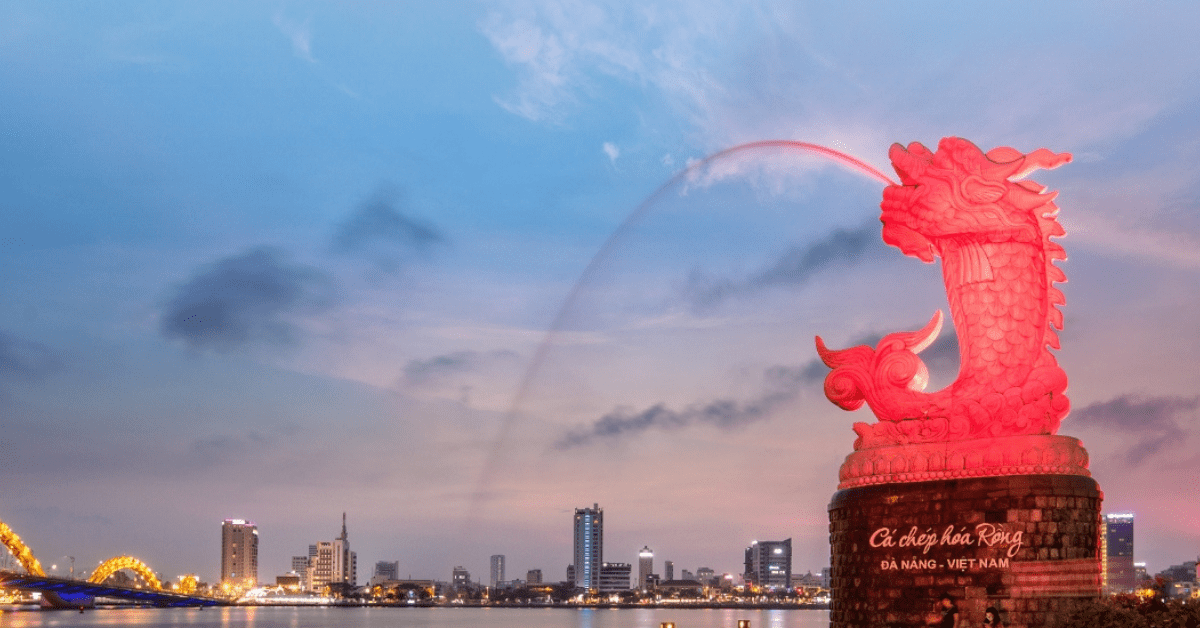
European Travel
- Asia
- Comment (0)
Best Time to Visit Vietnam and Cambodia: A Season-by-Season Guide
Thinking of going sightseeing in Southeast Asia and asking yourself when is the best time to visit Vietnam and Cambodia? The two countries are jammed with old temples, tropical scenery, diverse culture and delicious foodstuffs. Nevertheless, they can have wildly varying weather, depending at what time of year you visit, or at what part of the region you are a tourist. The seasonal trends will guide you to maximize the tour.
Let’s explore the best time to visit Vietnam and Cambodia, season by season.
Spring (March to May)
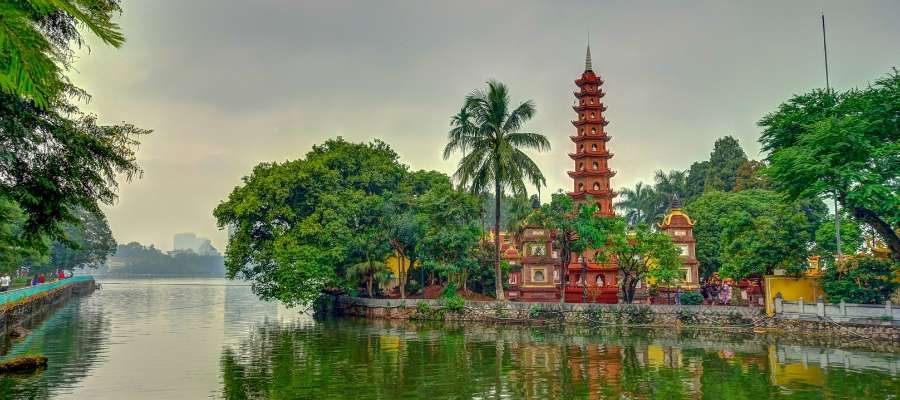
Ideal for: Outdoor exploration, cultural experiences, and warm weather
Spring is one of the best time to visit Vietnam and Cambodia because it is the time of the year when the weather is perfect and the surrounding nature is in bloom.
- Weather Conditions
In Vietnam, the spring season is with mild and dry weather in the north. The weather becomes warm slowly towards the end of May. Popular places to see in Vietnam during this time include Hanoi and Sapa, where the cooler climate offers a pleasant travel experience. In central Vietnam—cities like Hoi An, Da Nang, and Hue—the weather remains dry and is gradually becoming sunnier, making it ideal for sightseeing. Meanwhile, the south, including Ho Chi Minh City and the Mekong Delta, experiences hot and humid conditions. Dry, warm weather is also experienced in Cambodia, but it starts getting hot as early as April. - Cultural Festivals
This is a vibrant and culturally rich time to visit. The Khmer New Year, Cambodia’s most important festival, takes place in mid-April and is celebrated nationwide with lively water fights, traditional dances, and spiritual ceremonies. It’s the perfect opportunity to immerse yourself in local culture with a Cambodia travel package. Meanwhile, Vietnam hosts the grand finales of its spring festivals, including temple fairs and the stunning Perfume Pagoda Festival.
- Crowd Considerations
In spring, the moderate tourist flows also appear. Although Khmer New Year might attract crowds of local people, other main attractions, such as Angkor Wat or Halong Bay are not overcrowded but have visitors and the atmosphere is vivid enough, not frantic.
Why Choose Spring?
- Lush green scenery post-winter
- Sunny weather is favorable for photo taking
- Best time for outdoor exploration and cultural tours
Summer (June to August)
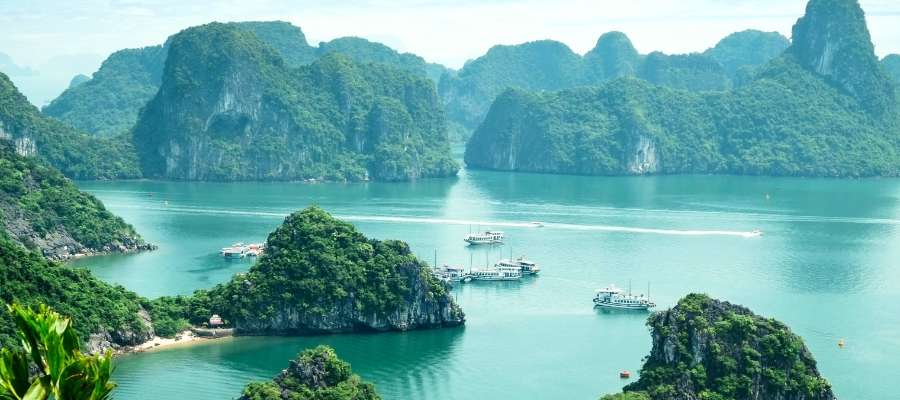
Ideal for: Beach holidays in central Vietnam, off-season travel in Cambodia
The months of summer are usually not preferred because most tourists avoid it during the monsoons, although it can be a good time as per your travel objective.
- Weather Conditions
Most of Vietnam and Cambodia start having the rainy season at the time of summer. Vietnam to the north and to the south encounters showers often, whereas central Vietnam is a bit dry and is more sunshiny-this is why places like Nha Truang, Da Nang, and Hoi An is the right place to be in case one likes the sight of the beach. Rainfall is also rising especially during July and August in Cambodia and downpours are usually of brief duration and experienced in the late afternoons. - Cultural Festivals
There is a reduced number of major national festivals but in both countries, there are local temple festivals and village celebrations all through the rural regions. These are exotic and close cultural encounters off the beaten track. - Crowd Considerations
This is low season; that is, fewer tourists, less crowded sites, and cheap lodgings. Or in case you are not afraid of a little rain, you will experience calm sightseeing like in Angkor Wat or in the Old Quarter of Hanoi, without any crowds.
Why Choose Summer?
- Less tourists and more silent temples and sights
- Lush land and colorful rice field
- Great hotel and flight deals.
Autumn (September to November)
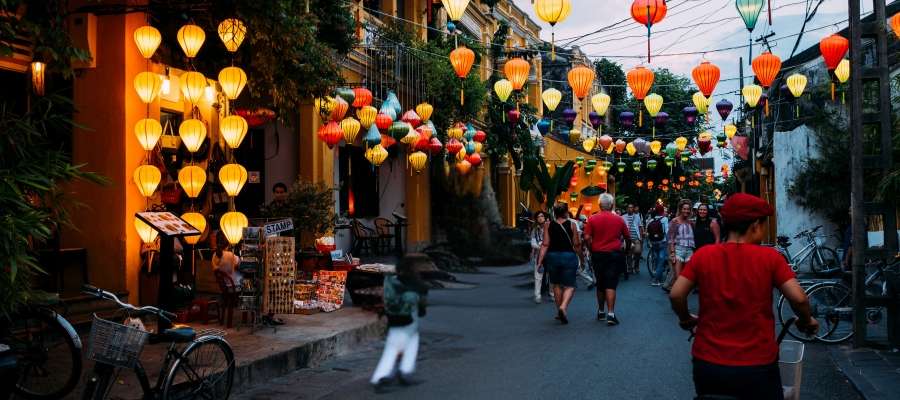
Ideal for: Scenic landscapes, cultural events, and perfect weather balance
It is commonly accepted that autumn is one of the best times to visit Vietnam and Cambodia, because of lower temperatures, greenery, and the appearance of dry days again.
- Weather Conditions
In Vietnam, towards the north regions, like Hanoi, Sapa etc, it gets cooler, clearer and conducive to a trek or taking tours of the city. Central Vietnam experiences an exit into the rainy season, and the south dries up. It is the post-monsoon freshness in Cambodia as rice fields are green, skies are blue and the air is cooler. - Cultural Festivals
It is a traditional season. The Mid-Autumn Festival of Vietnam is an auspicious festival of lanterns, mooncakes, and children’s procession. Cambodia also observes Pchum Ben, a holy season through which the family celebrates the ancestors by feeding them and praying at the pagodas. - Crowd Considerations
Tourism begins to rebuild, although it is not as crowded as during winter. If you desire to visit the famous attractions that do not have long queues and also have overpriced, autumn is the best time as it is not too hot, yet not too crowded.
Why Choose Autumn?
- Photograph the most appropriate ones when there is scenery and clear skies
- Ideal for cultural festivals and fewer crowds
- Ambient temperatures and low levels of humidity
Winter (December to February)
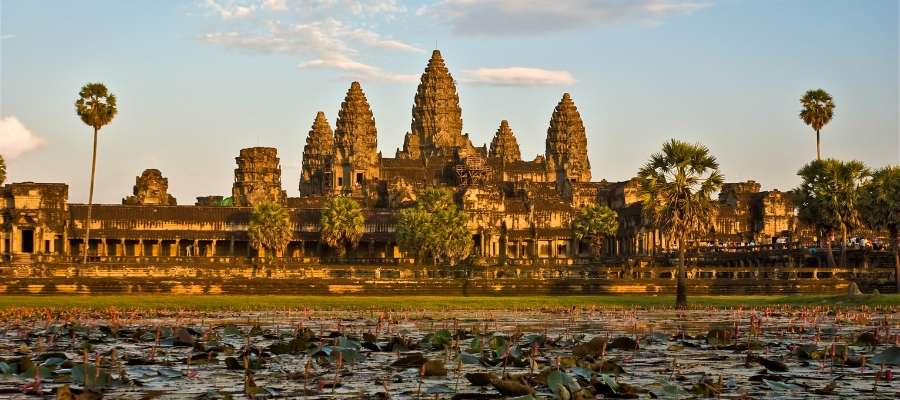
Ideal for: Overall travel adventures, in particular city tourist destinations and historic attractions
Winter is usually considered as the best time to visit Vietnam and Cambodia, provided that you want some sunshine with blue skies and good sightseeing.
- Weather Conditions
North Vietnam offers cool, misty weather—perfect for cultural tours around Hanoi and nearby mountain regions. Meanwhile, central and southern Vietnam stay dry and warm, making them ideal for a beach vacation. With average temperatures ranging between 20°C to 30°C, the climate is pleasant and inviting. Whether you’re exploring historic cities or relaxing by the coast, this is the best time to book a Vietnam travel package. - Cultural Festivals
It is the high festive season. Tet (Vietnamese Lunar New Year) is an unbelievable cultural event celebrated in late January or at the beginning of February, which welcomes Vietnam. Chinese New Year is also celebrated in Cambodia, as well as Meak Bochea; there are countrywide ceremonies with visits to Buddhist temples. - Crowd Considerations
It is high tourist season. The main attractions, such as Halong Bay, Angkor Wat, and beach resorts, will be busier than ever. It is advised to book hotels and transport beforehand to get the best choices.
Why Choose Winter?
- Good weather in both countries
- Suitable as sightseeing, cruising, and traveling to distant locations
- Peak season for festivals and local events
Conclusion:
Well, what would really be the best time to visit Vietnam and Cambodia? The response will be determined by the type of experience that you want:
- To get the perfect weather and the best of festivals: Choose December to February
- To avoid the crowds and to travel low cost: Opt for June to September
- To see beautiful landscape and to experience the holiday: Visit it during October or November
- To assemble the balanced weather and good accessibility: Consider March to May
Whether you’re a seasoned backpacker or venturing from a European Travel itinerary, both countries offer incredible adventures year-round—from misty mountains to ancient temples and tropical coastlines Whether they are the monumental temples of Angkor or street food in Hanoi and beaches in Da Nang, you cannot get enough of a magical experience in each season.
Are you all set to plan your trip? With this guide, you will never go wrong when it comes to planning the best time to visit Vietnam and Cambodia and getting your dream Southeast Asian trip to come true.
Frequently Asked Questions
1. What is the best time to visit Vietnam and Cambodia?
The best time to visit Vietnam and Cambodia is from December to February, as both countries experience an agreeable climate, and during this time, there are numerous cultural festivals. But all seasons have their own benefits regarding your travel intentions.
2. When is the cheapest time to visit Vietnam and Cambodia?
The cheapest time is June to September because it is the rainy season and few tourists. During this period you can get good bargains in accommodation and air travel.
3. Which season is best for avoiding crowds?
The ideal season to avoid the crowd is summer (June to August) and in early autumn (September). Angkor Wat and Halong Bay are some tourist sites that are less crowded and can experience some peace.
4. Is it okay to visit during the rainy season?
Yes, especially if you don’t mind brief afternoon showers. The rainy season (June to September) offers green landscapes, reduced tourist traffic, and travel bargains, especially in central Vietnam and in rural Cambodia.
5. What are the top cultural festivals to see?
- Tet (Vietnamese New Year) – At the end of January or the beginning of February
- Khmer New Year – Mid-April in Cambodia
- Mid-Autumn Festival (Vietnam) – September or October
- Pchum Ben (Cambodia) – September or October
These are great festivals that have elaborate cultural experiences involving traditional food, customs as well as celebrations.
6. Which season is best for cultural and scenic photography?
Vibrant landscapes, clear skies, and colorful festivals are the things that could be observed and photographed in the autumn (September to November).


